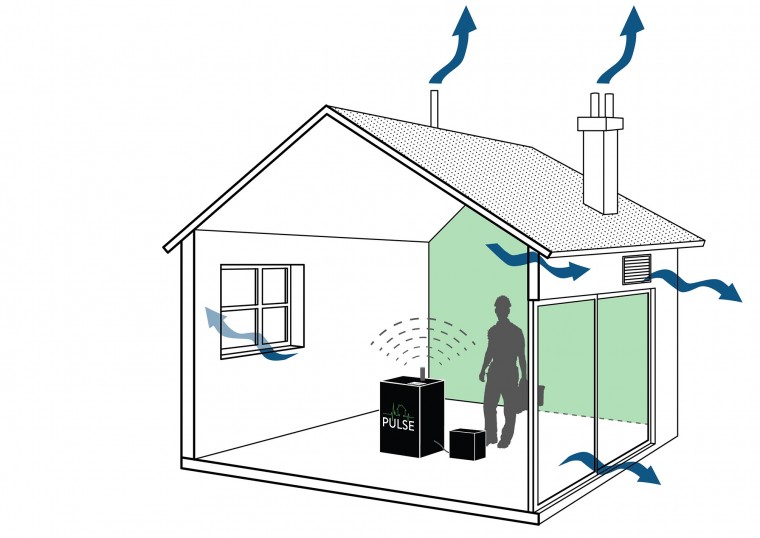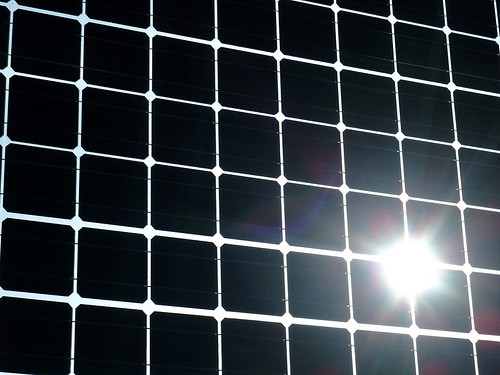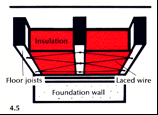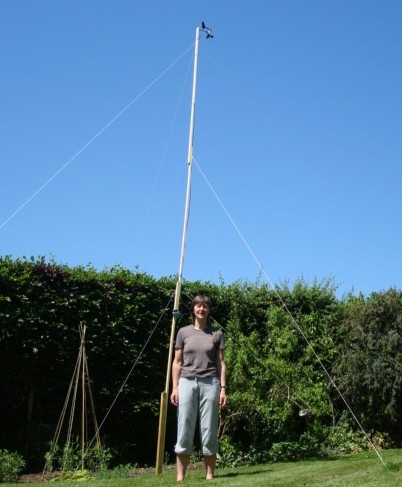Domestic renewable heat incentive: your questions answered€
Domestic renewable heat incentive: your questions answered
This blog was originally published on 21 September 2012, substantially updated on 25 July 2013, and updated again on 9 & 19 December 2013 and 10 April 2014 and 10 November 2014 and 5 March 2015.
We hosted a live online Q&A with the Department of Environment and Climate Change on 28 July 2014. CLICK HERE to see the questions and answers.
The renewable heat incentive is the government scheme to encourage the shift to low carbon and renewable heat technologies. It opened for business on 10 April 2014. The details of the scheme are below in question and answer format.
If you have questions about any of this, or there is something we haven’t answered, you can ask it in the comment section under this blog.
ELIGIBILITY CRITERIA FOR THE DOMESTIC RHI
Am I eligible for the renewable heat incentive?
The following people are eligible to apply for the RHI:
• Owner occupiers (including second homes)
• Private landlords
• Social landlords
• Self-builders
• Legacy (those who installed eligible renewable heat measures between 15 July 2009 and 8 April 2014)
Other new build housing is not eligible.
The scheme is for a system that heats a single domestic property. Systems that heat more than one dwelling (ie a block of flats or a house with a self-contained outbuilding) may be able to apply to the non-domestic scheme. Payments go to the owner of the scheme. DECC expects the domestic RHI scheme to be open until March 2021.
I’m a private landlord, can I apply?
As long as you own the heating system, you can apply, and you will receive the RHI payments. But you will be expected to get necessary permissions from your tenants, both to install the system, and so you can comply with the requirements on maintenance and possible site visits.
What do they mean by self-builder?
Someone who has built or commissioned a home for their own use, either by building the home themselves or by working with builders.
I have already installed renewable heat. Can I get the RHI?
Yes, as long as you installed it after 15 July 2009, and you have not received any government support since then (other than from the renewable heat premium payment scheme which will be deducted from the RHI payments). You come under the heading legacy installation.
What are the eligibility criteria for legacy installations?
Legacy applicants are people that installed renewable heating systems between 15 July 2009 and 8 April 2014. There are two exceptions to the eligibility criteria for legacy applicants:
1. the installation will need to meet the MCS standards that applied at the time of installation, rather than the current standards;
2. installations will not need to meet the air quality requirements that will apply from the launch of the scheme for new applicants.
ELIGIBLE TECHNOLOGIES FOR THE DOMESTIC RHI:
What technologies are eligible for the RHI?
• Air source heat pumps (ASHP) (initially this is only ASHP that heat water – ie air to water) and, from February 2015, high temperature heat pumps.
• Biomass boilers and wood pellet stoves with a back boiler (installations after 9 April 2014 that don’t meet 100% of the peak space heating load may be eligible, but will need to be metered). Biomass technologies installed post 9/4/14 must also meet air quality standards. Biomass fuel standards will come into force in Autumn 2014. Log-fired boiler stoves are not eligible.
• Ground and water source heat pumps (GSHP)
• Solar thermal (hot water) – only flat plate and evacuated tube solar panels will be eligible.
• Cooker stoves (as defined by changes to the RHI in February 2015)
To be eligible the heating system must be MCS (or equivalent scheme) certified and the installer must be MCS certified and a member of the renewable energy consumer code (RECC). However, MCS registration alone does not guarantee eligibility. A full list of products eligible for the domestic renewable heat incentive can be found on the Ofgem website.
DOMESTIC RHI TARIFF RATES
What are the RHI tariff rates?
• air source heat pumps 7.3p/kWh
• biomass boilers and biomass pellet stoves with back burner 10.98p/kWh (reducing to 8.93p from 1 April 2015)
• ground source heat pumps 18.8p/kWh and
• solar thermal technologies 19.2p/kWh
How long will they be paid for?
The tariffs will be paid for 7 years. Payments will be quarterly, in arrears, by Ofgem. The system is currently in development. They rise annually in line with the retail price index (RPI). While paid over a seven year period, the rates have been calculated over the expected 20 year life of the systems.
Is the RHI index-linked?
Yes, tariffs will change annually in line with the retail price index (RPI). Changes will come into effect on 1 April each year.
When will rates change?
A degression scheme, similar to the one introduced for the Feed-in Tariffscheme, will be put in place to manage the RHI budget. This means that tariff levels for new applicants will decrease by 10 per cent once specified amounts of the budget have been spent. The government will check every quarter to see if triggers are met. If they are, a month’s notice of the tariff reduction will be given. Degression will be per technology, not for the scheme over all, so that one technology is not allowed to dominate the budget. Formal reviews are planned for 2015 and 2017, but the government reserves the right to hold a review of the scheme at any time.
What will the tariffs be applied to?
Tariffs are paid per kWh of renewable heat generated. The amount of heat generated from your installation will be ‘deemed’. This is an estimate of the property’s expected annual heat usage. You multiply the deemed heat load of renewable heat by the tariff rate to calculate the annual payments.
For biomass, hybrid systems and heat pumps the estimated heat use of a property will be calculated after the installation of required energy efficiency measures (see below). This figure will be taken from the energy performance certificate (EPC) done as part of a green deal assessment.
For heat pump installations, the heat use figure will be combined with the heat pump’s expected efficiency to estimate how much renewable heat should be generated.
For solar thermal, the deeming figure will be the estimated contribution of the solar thermal to the property’s hot water demand. This calculation is part of the MCS installation process.
What’s the thinking behind the tariff rates?
Rates are based on technology and installation costs; technology efficiencies; technology lifetimes, the cost of financing; and the costs of off-gas-grid fuels such as electricity and oil. It factors in a 7.5% compensation for finance of the capital cost of buying and installing the system.
How soon will my investment pay back?
The domestic RHI has been designed as a ‘boiler replacement scheme’. As such, the payments are intended to bridge the costs between the installation and running costs of fossil fuel heating systems and the renewable alternatives. Unlike the feed-in tariff it isn’t talking in terms of investment, or payback (do you expect a gas or oil boiler to ‘payback’?).
HOW DO I CALCULATE THE POTENTIAL INCOME FROM THE RHI?
The RHI will be paid on each kWh of renewable heat generated, for seven years. For most heat pump and biomass heating systems this will be an estimated figure (to avoid the cost of metering). It will be taken from the heat demand figures for space heating and hot water on your EPC. The solar thermal figure will be calculated by your installer.
Biomass calculation of RHI payments:
You install a biomass boiler (tariff rate is 12.2p/kWh) in a home with expected heat demand of 18,000kWh (15,000 for space heating, 3,000 for water heating).
The calculation is 18,000 x 0.1098 = €1,976.4 RHI payment per year, for 7 years = €13,835
Heat pump calculation of RHI payments:
For this example we’ll assume a heat demand of 18,000kWh, and an air source heat pump (tariff rate is 7.3p/kWh). The heat pump has an efficiency rate averaged over the whole year (SPF) of 3 – ie it generates an average of 3kWh of heat for every kWh of electricity used.
The RHI is only paid on the renewable element of the heat, not the electricity used. To find that figure divide the heat demand by the SPF:
18,000 / 3 = 6,000
In this case 2/3 of the electricity will be renewable
6,000 x 2 = 12,000kWh x 0.073p = €876 per year x 7 years = €6,132
Solar thermal calculations:
Hot water demand of 2,000kWh, tariff rate 19.2p
2,000kWh x 0.192p = €384 x 7 years €2,688
Because there is only one tariff rate, whatever the size of heating system installed, and there are economies of scale on installation costs, larger systems will tend to get a better rate of return.
As well as the RHI payments, you will also want to consider any energy savings you get from installing a renewable system in your decision making. These vary considerably between technologies.
RHI SCHEME REQUIREMENTS
All heating systems and installers must be accredited by MCS or an equivalent scheme. In addition, installers must be members of theRenewable Energy Consumer Code (RECC).
What does it mean by MCS or equivalent?
MCS (the microgeneration certification scheme) is the UK’s accreditation scheme. DECC will also recognise certification schemes that meet standards such as European standard EN 45011, or ISO/IEC 17065 which has replaced EN 45011. Your installer must issue you with an MCS compliance certificate. You will need this certificate when making your application for RHI.
What are the energy efficiency requirements?
Everyone except self-builders will have to have a green deal assessment (including legacy applicants). This records the energy performance of your property, and will give you a list of measures that you could consider installing to increase its energy efficiency. It will include guidance as to how much they are likely to cost, and what savings they will generate on your energy bills. You will be eligible to apply for the RHI even if your chosen renewable energy system is not recommended on your green deal advice report.
If loft and/or cavity wall insulation are recommended by the assessment you must install them and obtain an updated energy performance certificate (EPC) before applying for the RHI. If installing them is not feasible, you will need to present valid evidence of why not. Self-builders will have to get an RdSAP EPC on completion of the property, and the deemed heat load figure will be taken from that.
Why has DECC set energy efficiency requirements?
Installing energy efficiency measures, such as cavity and loft insulation is the most cost effective way to reduce energy consumption and carbon emissions. If you increase energy efficiency, you will be able to install a smaller (and cheaper) heating system, and it will run more efficiently.
Why do I have to have a green deal assessment?
Probably to promote the government’s energy efficiency scheme. However it is also used as proof that loft insulation (to 250mm) and cavity wall insulation have been installed where required.
Are there any conditions I must meet?
You must have your heating system maintained regularly. You will have to confirm that your system is operating correctly as part of the application process, and will need to confirm annually that it is being maintained according to the manufacturer’s instructions.
Will I have to install a meter?
For biomass and heat pumps, meters will be required in two situations:
a. If the renewable heating system is installed alongside another fossil fuel or renewable space heating system (this includes hybrid systems);
b. in second homes.
You can also choose to install a meter under the metering and monitoring package, and this cost will be covered by an additional payment of €230 per year for heat pumps, €200 per year for biomass boilers. This is just for your peace of mind, so you know your system is performing as expected. Your payments will still be on the ‘deemed’ figure from your EPC.
Why do installations have to be ‘meter-ready’?
DECC wants to check its assumptions about fuel bill savings and renewable energy generation. Selected installations will have DECC’s metering equipment fitted, so all applicants will have to agree to this as part of the application process. DECC is working with MCS to make it an MCS standard to make all new domestic systems meter-ready where possible. It will not apply to legacy installations. This is not the same as getting a metering and monitoring package, and data will not be available for installers and householders to view in the same way.
BIOMASS CRITERIA FOR THE RHI
What biomass heaters are eligible?
You can install either a biomass-only boiler, fuelled by wood pellet, wood chip or logs, or a biomass pellet stove with a back burner (these are sometimes referred to as boiler stoves). It must meet the air quality and fuel sustainability criteria set out by DECC. Condensing biomass boilers are not eligible initially, but this will be kept under review, and may change.
What are the air quality requirements?
Systems must not exceed the maximum permitted emissions limits of 30g per gigajoule (g/GJ) net thermal input of particulate matter (PM) and 150g/GJ for oxides of nitrogen Nox. You will need an air quality certificate when you apply. You can find a list of eligible boilers and stoves on the Ofgem website. Legacy installations (those installed between 15 July 2009 and the start of the scheme) do not need to meet these requirements. Installations will also need to comply with national air quality and planning legislation.
What are the fuel sustainability requirements?
Fuels must be sourced from a supplier registered on an approved list (this will mandatory from autumn 2014, recommended prior to that). You will have to make an annual declaration that you are doing so, and keep receipts as evidence.
I’ve got my own wood supply, can I use that?
Yes you can, as long as you do not also supply to other biomass installations. “Woody biomass feedstocks” (this includes perennial energy crops such as miscanthus as well as wood) grown on the same “estate” as an eligible biomass system will be automatically treated as meeting the sustainability criteria. DECC is also looking at a ‘proportionate approach’ for local suppliers of wood fuel.
HEAT PUMP CRITERIA FOR THE RHI
Can I use my heat pump for cooling too?
No. Any cooling from heat pumps is not eligible.
How do I calculate the ‘renewable heat’ generated by a heat pump?
The renewable heat is the heat taken from the ground, air or water, net of the electricity that is needed to run the heat pump. The more efficient the heat pump, the more renewable heat will be produced.
This efficiency is measured as a seasonal performance factor (SPF). For example: for every 1kWh of electricity used, the heat pump will generate 2.5 kWhs of heat averaged out over a year. To work out how much heat is renewable use the following formula:
Eligible heat demand = total heat demand x (1 – 1/SPF)
So if the SPF=2.5, 1 – 1/2.5 = 0.6 of the heat output will be eligible for RHI payments.
Is there a minimum efficiency for heat pumps?
The minimum SPF (seasonal performance factor) allowable for a heat pump to qualify for the RHI is 2.5. This is based on an EU classification which states that only those heat pumps with a SPF of 2.5 or more are considered renewable.
HOW TO APPLY FOR THE DOMESTIC RHI
How do I apply?
Applications opened on 9 April 2014. For most people application is online at the Ofgem website. There are alternatives to make it accessible to all.
Don’t be tempted by people (or websites) who say they will do it on your behalf (for a fee). It’s designed to be easy, and doing so may jeopardise your eligibilityas the regulations don’t allow for third party applications.
If you installed your renewable heating system between 15 July 2009 and 8 April 2014 there is a phased application process to manage the large volume:
9 April – 8 July 2014: New applications and legacy applicants that have not received renewable heat premium payments (RHPP) can apply.
9 July – 8 October: New applicants, legacy applicants that haven’t received RHPP and those who applied for a RHPP voucher before 20 May 2013 can apply.
9 October 2014 – 30 March 2015: new applicants and all legacy applicants can apply.
Year 2 onwards: new applicants only
All legacy applicants must apply within the first year of the scheme; new applicants can apply as soon as their system is commissioned, and must apply within a year of the commissioning date.
Is there anything else I’ll have to do?
You will have to declare annually that the system is still in use and meets the scheme requirements; that it is in working order and maintained in line with manufacturer’s instructions; and the current recipient is still entitled to the payments. This is to ensure that you’re not continuing to receive payments for heat that isn’t being generated.
You may be selected for spot checks. Ofgem will be checking some installations while they process applications, and some after they have been accepted onto the RHI. MCS certifying bodies will also be checking to make sure installers are carrying out work to a high enough quality. There is also a checking process in place for green deal advisors, to ensure standards are met.
Some installations will be chosen for metering to provide DECC with information about how the technologies perform.
If you refuse to comply with any of the above it may delay or prevent acceptance onto the scheme. If you are not meeting the ongoing requirements, your payments will stop.
I have already received a renewable heat premium payment, can I apply for the RHI?
You must declare that you have received the RHPP – or any other public funding you have received for the heating system – as part of your application. It will be deducted from your quarterly payments over the life time of the tariff. The deduction will also be altered in line with the RPI each April.
FUNDING
Is there any help with the upfront cost of installing a renewable heating system?
You may be able to get some part-finance through the green deal, which enables you to pay off the loan through the savings that result on your energy bill. This will not cover the whole cost of any of the renewable heating systems.
OTHER QUESTIONS ABOUT THE DOMESTIC RHI
Who will benefit most from the domestic RHI?
The scheme is targeted at those off the gas grid and living in rural areas. There are about 4 million off-gas homes in the UK, evenly split between rural and urban areas.
The rural off-gas homes are generally heated by oil, LPG or electricity, and tend to be older, larger, solid walled properties that are not energy efficient. Because they are sparsely populated, and not suitable for heat networks, they are the properties that the tariff rates have been calculated for. DECC hopes to support around 750,000 renewable systems by 2020, predominantly off the gas grid.
In 2011, the average cost of heating a three bedroom house was almost 50% higher for oil, and over 100% higher for LPG, compared with mains gas.
Can I keep a back up heating system alongside my renewable heat one?
You can have another heating system (either renewable or not), but if you want to claim the RHI you will have to install a meter on your heat pump, biomass boiler or hybrid system. The RHI will then be paid on meter readings (as opposed to deemed heat use). However, payments will be capped at the deemed amount of heat use. You will be responsible for the installation of any required meters, and ensuring they meet the requirements in the metering for payment technical supplement.
The exception to this is if you install solar thermal with a heat pump or biomass system. Then you can make two claims for RHI – one for the solar thermal, one for the heat pump or biomass. Both systems will be paid according to the deemed amount, and will not need to be metered.
Room heaters, such as a wood burning stove (without a back boiler) do not count as another heating system in this context.
What is the RHI metering and monitoring package?
It is similar to a service contract. The meters will enable you and your installer to see the measured performance of your system online. The aim is to give you peace of mind that your system is working properly, and allow the installer to improve performance where possible and diagnose problems as they occur. The payment of €230 per year for heat pumps and €200 for biomass boilers is to reimburse you for the cost of the package over the 7 year life of the RHI payments. This package is not available for biomass stoves. In the first instance, it is only available to the first 2,500 applicants in the first year of the scheme.
What happens if I sell my property?
You must inform Ofgem, so payments can be transferred to the new owner.
What do I do if things go wrong?
If you can’t sort it out with your installer, then the process for complaints is available on the Renewable Energy Consumer Code website.
Can I install a log boiler stove that connects to the heating system?
No, these are not allowed, as there’s nothing to stop you burning coal in them too. The only boiler stoves that are eligible are those burning biomass pellets.
More information:
Renewable Heat Incentive Guide
Find a Biomass Boiler Installer
If you have any more questions, please ask them in the comment section below, and we’ll do our best to answer them.
Photo ACEP UAF
If you are not allowed, please ask them in the comment section below, and we’ll do our best to answer them.
€






